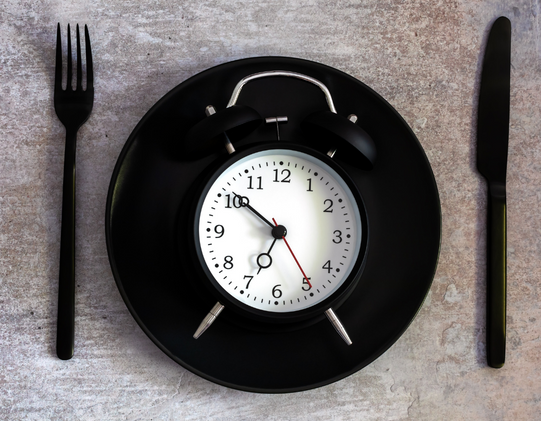
Magnesium Deficiency: How It Impacts Your Health
February 19, 2024
How To Destroy Your Gut Health 101
February 25, 2024
The idea of not eating for multiple days in a row may seem overwhelming or even extreme to some. But when done safely and with a plan, extended fasting can be a great tool to help you reset your body and help you achieve your health goals.
So…what exactly is extended fasting?
Is it safe?
Who should practice it?
People tend to be more familiar with intermittent fasting so questions like these are common. It’s important to have all the facts and assess if extended fasting to is right for you.
What is Extended Fasting?
Sometimes called periodic or prolonged fasting, it is defined as fasting that lasts from 2 to as many as 21 or more days. This type of fasting is less studied in humans, especially for periods longer than 4 days.(1) Our ancestors who were hunters and gatherers went extended periods of time without food. It may not have fallen under the umbrella of voluntary fasting but it does highlight the fact that humans are designed to withstand periods of abstinence. On top of that, we’re markedly efficient at storing energy (e.g., body fat), and during periods of prolonged fasting and carbohydrate restriction, it’s clear that we’re wired to flip the metabolic switch to produce and use ketones, which some argue are the body’s preferred fuel source. Research suggests longer fasts are safe and beneficial for most people but this does not mean they are right for everyone.(2) Typically it refers to 36-72 hours without eating. During this time, water, electrolytes and non-caloric beverages are allowed.
The Benefits of Extended Fasting
Though the thought of this practice may seem unpleasant to many, there are actually quite a few benefits:
- In animal studies, it has been shown that lifespan and health span are prolonged.
- Extended fasting can promote ketogenesis, stress resistance and autophagy.
- Modification, the balance of good vs. bad gut bacteria (biome), to make the tissue of the digestive tract healthy and efficient for metabolism.
- Activation of stem cells which promotes multiple system regeneration.
- Increased amounts of mitochondria in cells which equates to a faster metabolism.
- Fasting can put you back in the driver’s seat where food no longer controls you.
The Drawbacks
- Can be physically, mentally and emotionally demanding.
- Must be planned out including a “refeeding timeline.”
- Intensity of this kind of fast is not to be done more than three or four times per year. You could actually harm yourself if you approach this method too quickly or too often.
Tips/Disclaimers
Firstly, consult your healthcare practitioner before attempting any type of drastic changes to your health regimen. Anyone who suffers from an eating disorder, is clinically underweight, is diabetic, has low electrolytes, suffers from dehydration or anyone under significant stress should NOT do extended fasting. If your “bucket” is already full because of any of these other conditions, it does not help to keep filling the bucket until it overflows. The importance of community during the fasting period is essential for success. If you are giving it a try, you will need support from those around you to cope with the demands placed on you physically, mentally and emotionally.
Is Fasting the Missing Link?
By changing the ‘when’ (which is only amplified by changing the ‘what’) you can markedly improve your health in countless ways. So, fasting could be the “missing link” in most people’s diets, because it’s an easy tool with such a tremendous upside. In other words, fasting — in its various forms — is low-hanging fruit when it comes to:
- Improving body composition
- Tapping into ketosis and “keto-adaptation”
- Improving cognition and brain health
- Anti-aging/reduced biological aging
- Improved resilience/stress resistance
- Lowering inflammation in the brain, gut and body
- Elevating energy levels
- Improving circulatory health
- Regulating appetite
- Improving gut health
- Improving self-control and willpower
The Fasting Police
Before the “fasting police” knock on your door, please read this. People often ask, “What breaks a fast?” Just like fasting itself, there is a ton of contradictory information out there. When people discuss “breaking the fast”, they are talking about ingesting something that stops the benefits of fasting which are fat loss, autophagy and the elevating of ketones. The obvious answer about what breaks a fast is eating food. But there are many people, who sometimes find it beneficial to include some supplements in a fast such as MCT powder or bone broth. Does it momentarily pause the processes of fat loss, autophagy and the elevation of ketones? Yes, it does. But this isn’t a hard start or stop situation. If adding in a bit of bone broth allows you to go a longer period of time in your fast, then your overall benefits are going to be greater, regardless of that momentary stop.
Conclusion
It’s important to decide what your fasting goals are because they 100 percent matter. Personally, my goals have to do with mindset and willpower. Centering my fast on going a certain amount of time without eating helps me focus and reminds me that I have control over food. It also reminds me of my strength. Having the strength and willpower to do an extended fast is extremely empowering and I can see the benefits of this in other aspects of my life afterward.
Fasting isn’t easy so if you need to include supplements, go for it. If you’re enjoying the process, then it is likely you will fast more frequently and reap further benefits from it. Grant yourself some grace to explore what works for you and what makes you stronger and healthier. Generally, fasting can be different for women so check out this guide if you’re considering it. Also, if you haven’t fasted before and want the all the details, learn about the types of fasting and receive a free fasting journal here.
Found this article interesting?
For more tips and the latest and greatest in health optimization, follow me on Instagram.
Sources
1. Wilhelmi de Toledo F, Grundler F, Bergouignan A, Drinda S, Michalsen A.
Safety, health improvement and well-being during a 4 to 21-day fasting period in an observational study including 1422 subjects. PLoS ONE [Internet]. 2019 [cited 2020 Nov 27];14. Available from: https://www.ncbi.nlm.nih.gov/pmc/articles/PMC6314618/
2. de Toledo, F. W., Grundler, F., Bergouignan, A., Drinda, S., & Michalsen, A. (2018). Safety, health improvement and well-being during a 4 to 21-day fasting period in an observational study including 1422 subjects. PLoS ONE, 14(1). https://doi.org/10.1371/journal.pone.0209353





